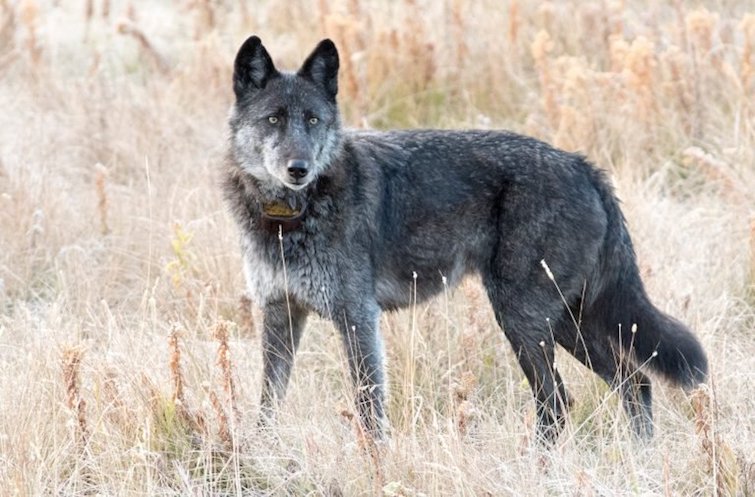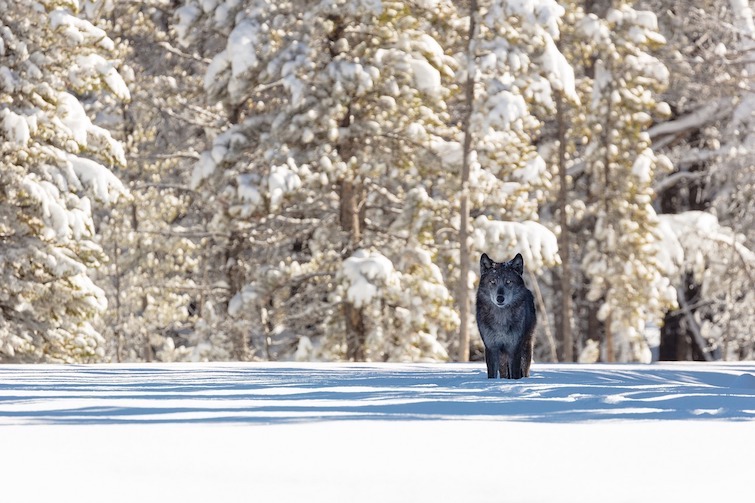
If you’ve ever had the pleasure of visiting Yellowstone National Park, then you likely know who Spitfire is. Scientists called the seven-year-old female “Lamar Canyon Wolf Pack member 926F.”
The beautiful wolf was also known as just Spitfire.
In late 2018, a trophy hunter that was lurking near the northeast entrance of the park spotted Spitfire outside the park and took the opportunity to shoot and kill her.
And the worst part of all? It was a hundred percent legal since Spitfire was killed outside the park’s invisible borders.
Wildlife advocates are demanding a no-kill buffer outside of Yellowstone Park, yet hunting groups are pushing back.

Spitfire was the daughter of former pack leader 832F, that the New York Times named “the most famous wolf in the world.”
832F was known to frequent tourist roads where she was often spotted.

She was also the inspiration behind the book American Wolf: A True Story of Survival and Obsession in the West.
Unfortunately, in 2012, 832F, better known as “06” – the year that she was born – was killed by a hunter.

It's unimaginable that her daughter mett the same fate.
Spitfire’s pack, known as the Lamar Canyon pack, is now only six wolves strong, most which are still pups – with four of them born in 2018. Not to mention, that's the first surviving litter in the last three years.
It's unclear if the pups’ mom is Spitfire, or if they belong to Spitfire’s daughter, Little T, the pack’s current alpha female.
Experts say that the fate of the vulnerable pack is in question.
In the 1920s, wolves became extinct to the park, and for years there were no wolves in the area.
This changed in the 1990s when wolves were brought in from Alberta, Canada and reintroduced to the park.
Spitfire’s bloodlines traced back to wolf #9, one of the first wolves to repopulate the park.
Over the last 20 to 30 years, Yellowstone’s wolf population has grown to around 100 wolves, which are dispersed amongst ten distinct packs.
While it is illegal to hunt animals inside of Yellowstone National Park, Spitfire had wandered outside the park’s unmarked borders where hunting is legal.
The savage, yet legal, killing of Spitfire has reignited a fierce debate about extending the no-kill buffer outside of Yellowstone’s invisible borders.

It's very common for animals living inside of the park to wander outside of the borders, where as of now, they have no protection.
Animal activists are up in arms about this, fighting to extend protection to the animals outside of the park. Surprisingly, there’s been a lot of pushback.
In reality, one can legally hunt wolves throughout most of the Northern Rocky Mountain region – so there is no reason why hunters should be allowed to hunt wolves in such proximity to the park.

Montana has a law in place which forbids a buffer zone from being implemented around the park.
However, according to a report by the New York Times, “there is a hunting limit of two wolves in each of two districts adjacent to the northern boundary of the park.”
To make things even more unfair, the wolves that live in the park are more comfortable around humans than most.
That creates a too-trusting mentality that makes it easier for hunters to go after them.
While there are only a hundred wolves in the park, it's estimated that at least 1,700 wolves live throughout the Northern Rocky Mountain states of Wyoming, Idaho, and Montana.
Reference: Powerful Mind














COMMENTS